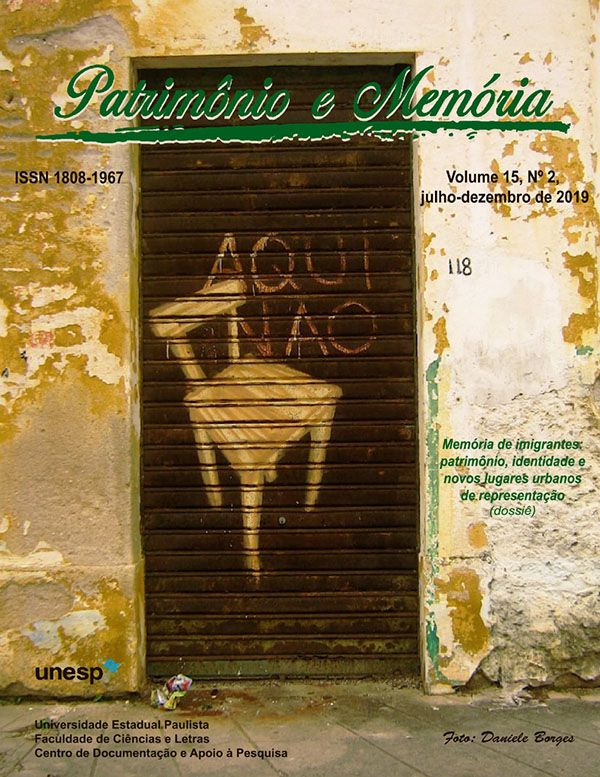With the house on his back…
DOI:
https://doi.org/10.5016/pem.v15i2.3268Keywords:
Nomads, Migration, Memory, HeritageAbstract
At present, the processes of migration in the world are constant and permanent, displacements that happen throughout the planet. Migratory phenomena are not new, they are the processes that since the social beginnings of the human group, cultures have been created and defined. Oceans, continents and countries are crossed, in constant search for better and safer destinations for the development of life. The social exchanges between the different groups give rise to the transmission of knowledge, traditions and beliefs, values carried by memories and memory in the intangible house, which each of the migrants keeps alive and present. Nomads in the present, ethnic groups that maintain their traditions for centuries. The valuation of these intangible assets generates the concept of Intangible Cultural Heritage, which disseminates and protects the cultural importance they bring to society.
References
BARTOLOMÉ, Miguel Ángel. Procesos interculturales: antropología política del pluralismo cultural en América Latina. México: Siglo XXI, 2006.
CARMICHAEL, Leonard. Nomads of the world. México: Diana. 1978.
DYSON-HUDSON, Neville. Nomads of the world. México: Diana, 1978.
EOM. La influencia gitana en el mundo: tras las huellas del pueblo gitano. Disponible en: <https://elordenmundial.com/tras-las-huellas-del-pueblo-gitano/>.
HASA. Grupo Asistencial. Movimientos migratórios: enfoques y evolución. Disponible en: <http://www.juntadeandalucia.es/empleo/recursos/material_didactico/comun/multiculturalidad/pdf/modulo1.pdf>.
MCDOWELL, Bart. Gypsies, wanderers of the world. México: Diana. 1978.
PROYECTO CULTURA 2000. La presencia Romaní en las músicas de Europa. Disponible en: <http://www.patrimonioculturalgitano.org/web/castellano/pro_02. htm>.
SÁNCHEZ, María del Carmen. Plaza Venezuela: paisaje del tiempo. In: GONZÁLEZ MUÑOZ, Jenny (Org.). Ser de imagen y de signo: abordajes sobre el patrimonio cultural. Caracas: FEULAC, 2015, p. 55-75. Disponible en: <https://issuu.com/mauryabrahammarquezg/docs/ser_de_imagen_y_de_signos_abordajes>.
UNESCO. Declaración Universal de la UNESCO sobre la Diversidad Cultural. La diversidad cultural, patrimonio común de la humanidad. Artículo 1, 2001. Disponible en: <http://portal.unesco.org/es/ev.php>.
______ . Patrimonio Cultural Inmaterial. Convención para la salvaguarda del Patrimonio cultural inmaterial, 2003. Disponible en: <https://es.unesco.org/ themes/patrimoniocultural-inmaterial>.
______ . Patrimonio Cultural Inmaterial. El Moussem de Tan-Tan, 2008. Disponible en: <https://ich.unesco.org/es/RL/el-moussem-de-tan-tan-00168>.
______ . Patrimonio Cultural Inmaterial. El flamenco, 2010. Disponible en: <https://ich.unesco.org/es/RL/el-flamenco-00363>.
______ . Patrimonio Cultural Inmaterial. Los conocimientos y prácticas vinculados al IMZAD,2013. Disponible en: <https://ich.unesco.org/es/RL/los-conocimientos-y-practicasvinculados-al-imzad-de-las-comunidades-tuaregs-de-argelia-mali-y-niger-00891>. VELÁSQUEZ, Ronny. Venezuela pluriétnica: el otro y la diferencia, el mito y las identidades. Caracas: Tropikos, 1993.
Downloads
Published
How to Cite
Issue
Section
License
Copyright (c) 2019 Patrimônio e Memória

This work is licensed under a Creative Commons Attribution 4.0 International License.
All the content of the journal, except where noted, is licensed under a Creative Commons BY attribution license.


